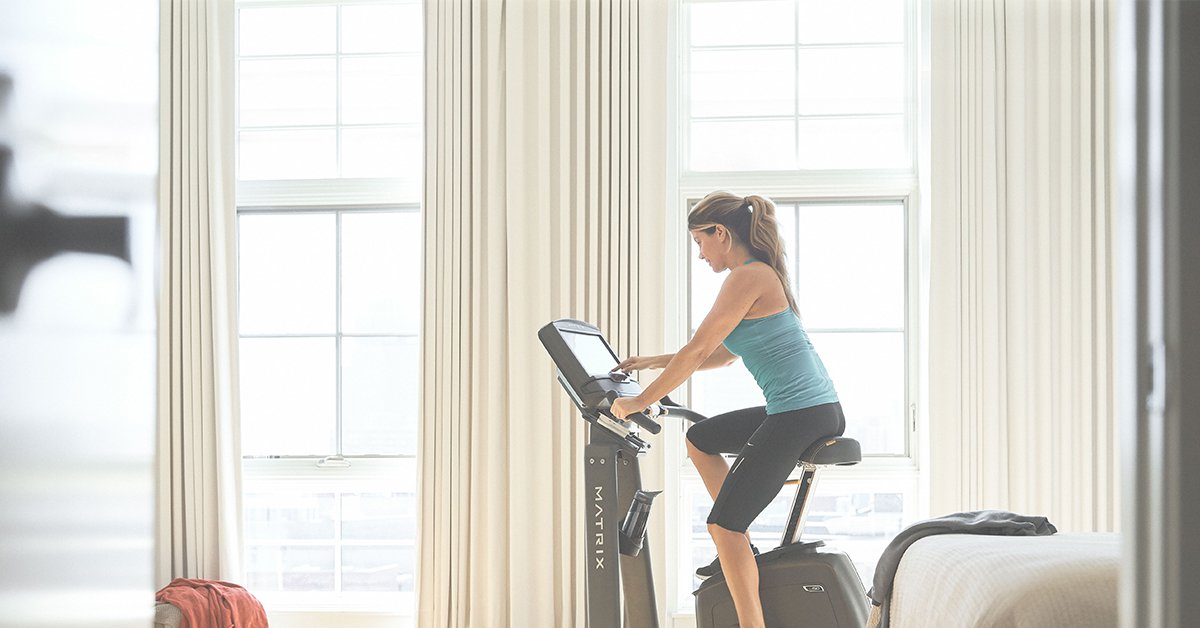
Indoor cycling burns serious calories. Cycling workouts get the heart pumping and leaves your metabolism jacked for hours, without impact on your joints. So if a calorie churning workout is what draws you to your indoor cycling training, it makes sense to maximize efforts to increase the calorie burn. Wondering how to do it? Here are five hacks to make your cycling workouts more effective at burning a ton of calories.
Use your Handlebars Appropriately:
One of the biggest mistakes I see when it comes to indoor cycling is riders who lean over their handlebars rather than the pedals and saddle. When you lean onto the handlebars, you reduce the force of your legs into the pedals, as well as the engagement of your arms and core. In short, you compromise the use of nearly every muscle in your body. This results in a lower overall calorie output during your workout. To use your handlebars effectively, imagine that you are pulling them back towards your body to brace your core and your lower body effectively. If you struggle with bringing too much weight into your arms and upper body, try raising your handlebar height. This allows you to sit back closer to the saddle.
Target your Core:
Once you’ve got your handlebar position and are actively using your arms to assist your cycling efforts, your next step is to keep your core engaged. Again, the more muscles you use in your indoor cycling workout, the greater your calorie burn will be. Practicing core engagement during your indoor cycling training sessions will establish good cycling habits and form for outdoor cycling. To engage your core during seated cycling workouts, imagine that you are slightly lifting your bottom away from the saddle. This will allow you to put more force into the foot pedals and less into the seat. Engaging your core during time out of the saddle will tend to happen naturally if you are pulling away from (rather than leaning into) the handlebars. You can enhance that further by drawing your low belly slightly in towards the spine to support your low back.
Bring in your Back(side):
Experienced cyclists know the importance of using the power from behind during tough training sessions. A common mistake among new riders is relying heavily on the quadriceps while sacrificing engagement of the backside. The result of this is a lazy ride that decreases efficiency in the saddle and overly relies on gravity, decreasing power out of the saddle. During standing climbs, correct this by keeping your hips back and low (towards the saddle). This will naturally tend to happen as you pull back on the handlebars and engage your core. However, you can enhance it further by keeping your chest up and using the natural curve in your low back to keep your hips low. Now maintain this engagement as you sit into the saddle by lowering lightly (low core engaged). Also, keep your hips back so that you are sitting on the front of your sit bones. You should immediately feel a difference as you target the muscles behind your hips, rather than simply your thighs. This positioning is especially effective at moderate to heavy loads.
Wattage is Your New Best Friend:
Basing your cycling workouts on your wattage will give you immediate feedback on how much power your body is creating. This directly correlates to the calories you are burning. Maintaining a challenging power output (wattage) will result in more consistent workouts and maximize your calorie burn over varying cadences (RPM’s). I like to perform a wattage check by putting a load on the bike that results in a moderate effort at 70 RPM. After maintaining that load and cadence for a minute, increase your effort level to bring your leg speed closer to 100 RPM. Hold that for 1 minute. You should see your wattage (and your heart rate) soar, giving you a good idea of where your peak efforts should be during your workouts. If your pace shoots past 110 RPM, try repeating the drill with slightly more load. If you cannot get above 90 RPM, try repeating the drill with less load. Remember the wattage that you see during your 1 minute effort and use it as a reference point during your workouts.
Use Pre-Programmed Workouts Intelligently:
From standard intervals to Sprint 8, to steady state aerobic training, the consoles of many exercise bikes can help you take the guesswork out of your programming, if you use them intelligently. Keep the resistance heavy enough to force you to use your body rather than momentum to complete your workout. Use the form cues above to ensure that you are using as much of your body as possible to increase your cycling efforts. Watch your wattage to ensure that you are not dogging the workout just to log time on your machine.
While it seems like a simple concept, remember that calories burned are the direct result of using our body. If your primary objective is to burn a lot of calories on your exercise bike, make sure you are using your body as much as possible. Minimize your reliance on the bike to hold you upright or create the movement. These hacks are directed at maximizing the action of your body on the indoor cycle, which will ultimately improve both your calorie burn and your indoor cycling training.
About the writer: Joli Guenther is a certified personal trainer, yoga instructor and clinical social worker practicing in and around Madison, Wisconsin. Learn more about Joli.

